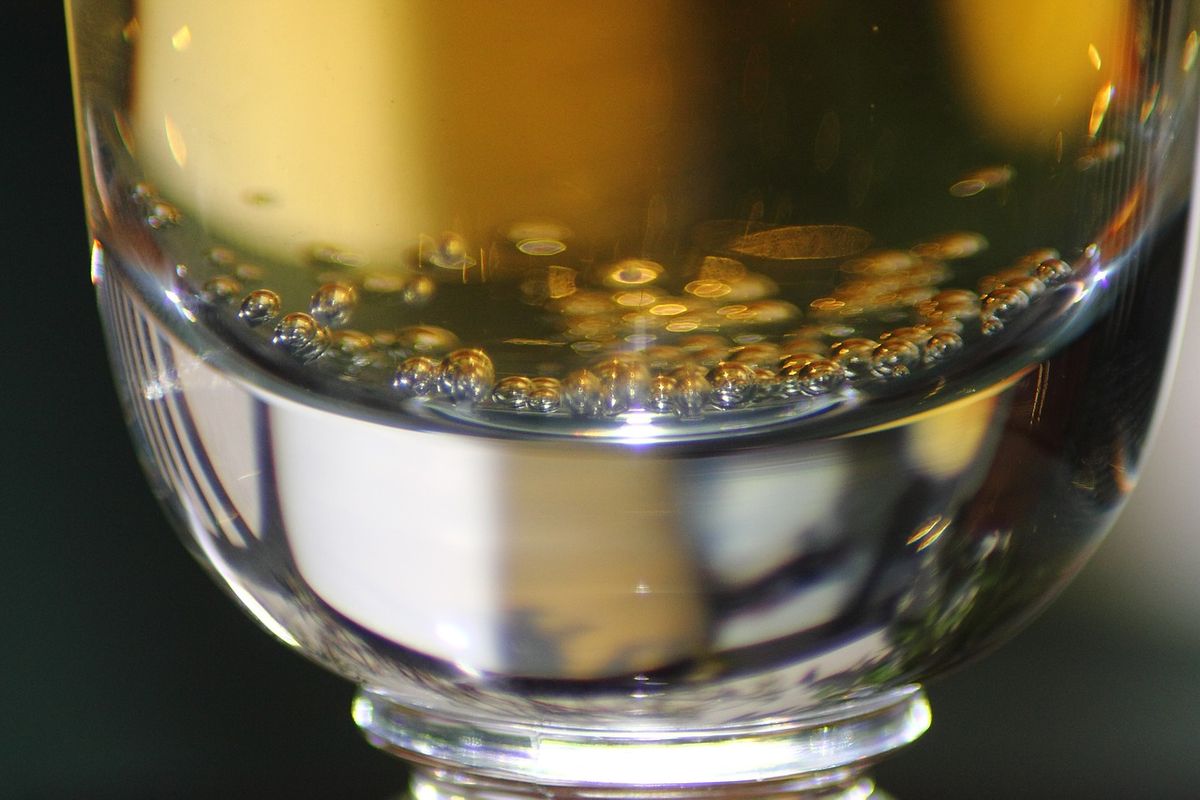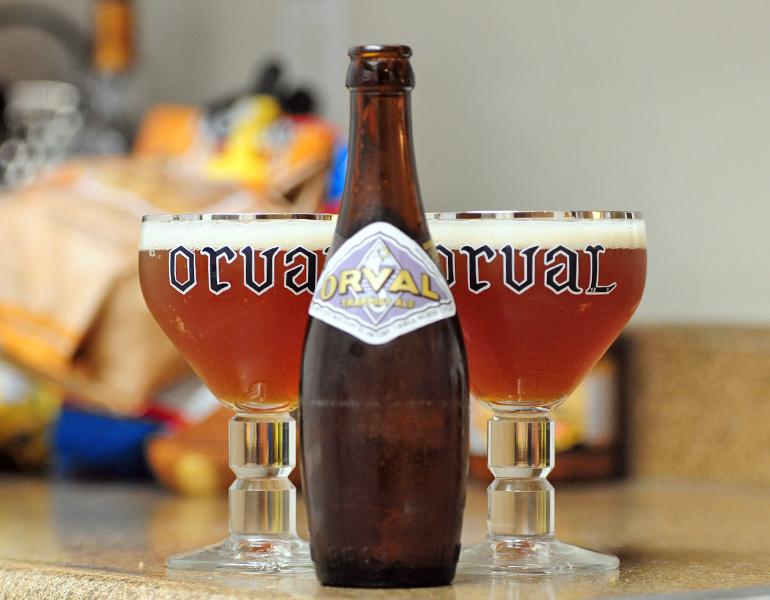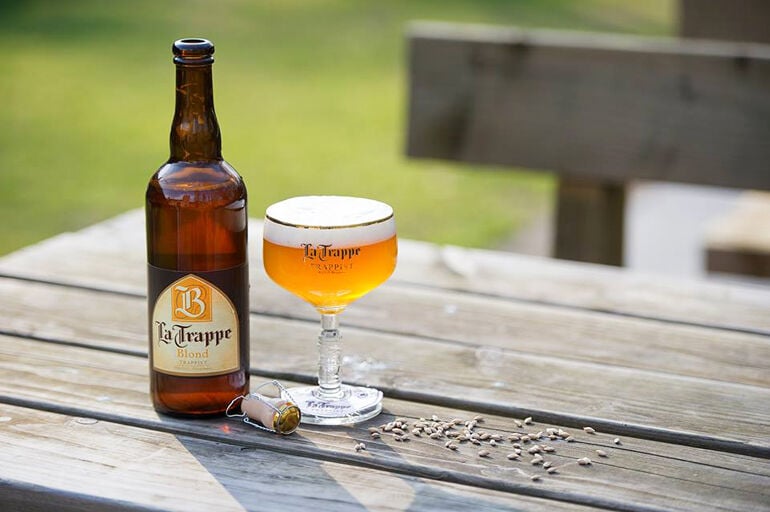Start 14-Day Trial Subscription
*No credit card required

A Primer on Bottle-Conditioned Beer
Beer is alive.
Well, not all beer, and technically I suppose it isn’t the beer that’s alive but rather that there are living things in the beer, but there’s no question that there’s something going on in a lot of those bottles. That “something,” is often “bottle conditioning,” or the natural carbonation of beer in the package. Bottle conditioning (as opposed to force-carbonation) comes along with some benefits and risks to both brewer and consumer, and is worth spending a few minutes on if only to answer the question, “Why is there sludge in the bottom of this bottle?” or "What is bottle-conditioned beer?"
We’ll take a short trip down Beer Science Lane and then discuss what bottle conditioning means for us (as brewers and/or drinkers) and the beer itself.
Bottle Conditioning: A Primer (Pun Intended)
Yeast makes beer. Before yeast is added, what you have is actually wort, and contains a variety of sugars derived from grain starch, hops and their oils, and water. Adding the fourth and final ingredient – a pitch of millions of yeast cells – turns that wort into beer. As the yeast wake up, reproduce, and live out their short-but-happy lives they use the sugars in the beer to fuel their activity, and in the process, ferment those sugars into alcohol and a variety of byproducts. Once the sugar runs out, the yeast goes back to sleep, and we’re left with flat, alcoholic beer.
One of those byproducts of fermentation is carbon dioxide. During fermentation, CO2 is simply “off-gassed” up and out of the fermenter. However, if we take that same fermentation process and do it in a sealed space – a bottle – the CO2 has nowhere to go and is absorbed into solution in the beer. Thus, brewers can take finished beer, bottle it up along with a small amount of easily-fermentable sugar (“priming sugar,” usually just dextrose), and let the yeast do what they do best. They conduct a “mini-fermentation” right there in the bottle, which adds a negligible amount of alcohol and, more importantly, just the right amount of trapped CO2. Voila: carbonation.

Why Bother?
Admittedly, this isn’t the only way to skin a cat. Brewers can also keg beer, put it under direct pressure by adding CO2 to fill the headspace, and force carbon dioxide directly into solution before packaging. The biggest advantage of this method is that it’s certain: the brewer knows exactly how carbonated the beer is when it goes into (and, for you, out of) the bottle. When paired with pasteurization, it also ensures that any potentially-contaminating microbiota are dead, increasing flavor stability. Bottle conditioning, though, is pretty reliable, too: we can calculate arithmetically just how much priming sugar to add to get the carbonation level we want, and yeast, it turns out, are hardy little buggers. I’ve never had a beer fail to carbonate, no matter how long it’s been since primary fermentation or how high the ABV is (alcohol creates a toxic environment for yeast, which can impede their functioning). Still, maybe the force-carbonators have a point.
The real advantage in bottle conditioning, though, comes from the activity of the yeast, not the CO2 they produce.
First, in moving through their life cycle and fermenting sugar, the yeast also remove something else from their environment: oxygen. Oxygen is a real enemy of beer, accelerating staling and adding off-flavors, and bottle conditioned beers have a living advantage in the bottle that will take up small amounts of residual oxygen that may have been picked up in the packaging process (from the air in the tubing used to transfer into the bottle or oxygen in the head space air within the bottle itself). Even if CO2 is used to flush the bottles and lines at packaging, breweries still contain oxygen (otherwise the brewers would die), and knowing that my yeast will do one last “polish” on the beer is a great comfort to me.
Second, leaving living yeast in the bottle means that the overall flavor of the beer can continue to evolve and change in subtle ways. Beers that will be aged for some length of time can develop, with the help of live yeast, mature flavors that can’t otherwise form. Even with nothing more added once the initial priming sugar is consumed, the yeast will keep on hunting. It isn’t so much that the yeast can’t ferment, process, or consume the other things in beer, it’s just that some of those things take a lot longer to consume. Bottle conditioning means that there’s guaranteed to be a live culture of yeast in that beer that can keep making “home improvements” long after the cap is on, potentially to your benefit.
Last, yeast actually add flavor to the beer. Nutrients, too, but I’d never make the case for beer as a health food (though there’s definitely an argument for it as being healthier than other alcoholic beverages!) Yeast add body, bready flavors, texture, and more to the beer you pour. Many beers actually rely on those textures to make them stylistically accurate, so go ahead and drink your yeast (within reason – see below!).
As we can see, there are distinct advantages to bottle conditioning that are harder to derive from force-carbonated beer that may also have its yeast filtered out, killed through pasteurization, or present but in too-small a quantity to make any contribution.
Drinking Bottle Conditioned Beer
Before you head gleefully to the bottle shop to score yourself some naturally-carbonated, living beer, there are two quick caveats for us to address: pressure and digestion.
First, bottle conditioning is scientific, but that doesn’t mean mistakes can’t happen. If the brewery makes an error in calculating the priming needs of the beer (or if a contamination gets into an unpasteurized bottle), you could end up with a “gusher” (an over-carbonated beer that sprays you, the dog, and the walls with beer shampoo when the CO2 comes violently out of solution) or a “bottle bomb” (an over-pressured bottle that ruptures before the cap is even removed, hopefully safely within your refrigerator). Let me say, though, that these are pretty rare in the commercial beer world (a little less so among homebrewers, but even there they’re not common).
The second (and more-prevalent) issue comes from an excess of ingestion of live yeast. There’s no real danger, per se, but things can get…interesting. When pouring bottle conditioned beer, I’d recommend that you do so gently – that way, the slurry of live yeast at the bottom of the bottle stays there, or, if it moves up the bottle, tends to collect near the curve in the neck of the bottle, giving you a mostly-yeast-free pour of beer. If you don’t do so, and you consume a significant amount of yeast, you may experience a rather “energetic” level of intestinal activity in the hours that follow. That’s not to say you should avoid yeast entirely – many Belgian and German styles derive a flavor benefit from giving the bottle a swirl to bring the yeast up into suspension before pouring and drinking – but maybe limit yourself to just one or two “yeasted” pours!
Conditioned
Don’t let me tell you what or how to drink, though. Taste bottle conditioned and force-carbonated beers in the same style side-by-side. Try some with the yeast and without. See what you like. Every beer is different, and every beer drinker brings unique preferences to the table, so get to tasting and see what you prefer!

(Photo by Adam Barhan)




Comments